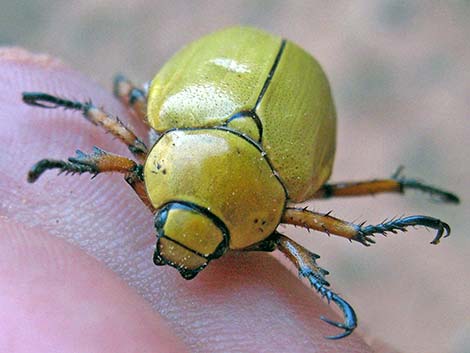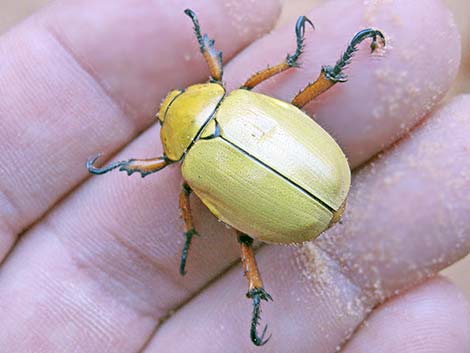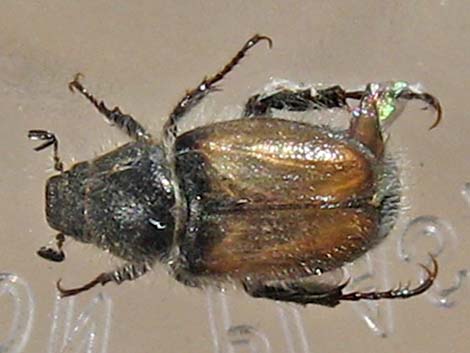
Invertebrates Around Las Vegas, Wildlife Around Las Vegas
 |
General: Scarab Beetles (Family Scarabaeidae) are a diverse group of beetles with some 30,000 species worldwide and 1,400 species in the U.S. and Canada. The group is morphologically diverse, ranging in size (in North America) from 2-62 mm (to 2-1/2 inches), although most no longer than 20 mm (0.8 inches). Most Scarabs have stout bodies, are oval or elongated-oval, and are dark in color, although some are brightly colored or patterned. Scarab Beetles are recognized by the front tibia, which are widened and have teeth on the outer edges, and by the last segments of the antennae that are often flattened and can be expanded to a fan-shaped structure or rolled up to form a club; the entire antennae can be folded under for protection. The front legs of many species are broad and used for digging. Some species have horns, which the males use to fight in contests for females. |
 |
Adults eat a variety of foods, including fungus, dung, carrion, other decomposing matter, sap, pollen, nectar, fruit, leaves. Some larvae eat decomposing matter such as dung and carrion; others live in the soil and feed on plant roots. Scarab Beetles are fairly common in the deserts around Las Vegas. For more information, see BugGuide.net or Wikipedia. |
| Photo | Subfamily | Species Around Las Vegas |
|---|---|---|
 |
Rutelinae | Shining Leaf Chafer Beetles (Cotalpa spp.) |
 |
Rutelinae | Little Bear Scarab Beetles (Paracotalpa ursina) |
 |
Melolonthinae | Junebugs (Gymnopyge spp.) |
 |
Various | Unidentified Scarab Beetle |
Note: All distances, elevations, and other facts are approximate.
![]() ; Last updated 240221
; Last updated 240221
| Inverts Around Las Vegas | Wildlife Around Las Vegas | Glossary | Copyright, Conditions, Disclaimer | Home |